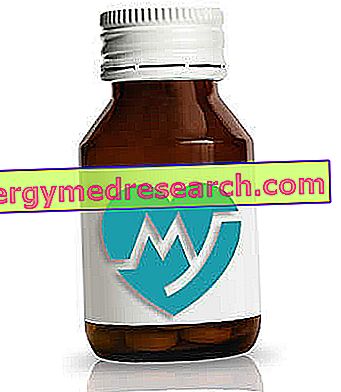Generality
Alkylating agents are a class of drugs used to treat cancer. These molecules act by intercalating (ie inserting) the alkyl groups between the two strands that make up the double helix of DNA.

In healthy cells there are defense mechanisms to repair the damage that can occur to DNA. In tumor cells, on the other hand, these mechanisms are much less efficient and this is why the diseased cells are particularly sensitive to damage caused by alkylating agents. However, these compounds show a certain toxicity also towards healthy cells, especially at the level of those tissues that are characterized by a rapid cellular turnover, as happens, for example, in the mucous membranes of the gastro-intestinal tract, in bone marrow or on leather hair.

DNA consists of two strands joined together to form a double helix.
DNA is made up of many monomers, called nucleotides. There are 4 types of nucleotides: adenine (A), guanine (G), cytosine (C) and thymine (T), which combine with exclusive pairs of AT (adenine-thymine) and CG (cytosine-guanine) held together by hydrogen bonds .
The sequence of bases present along the DNA molecule carries the genetic information.
Alkylating agents are dose-dependent, ie the amount of cancer cells that die is directly proportional to the amount of drug used.
They can be administered alone or in combination with other drugs and / or other therapeutic strategies.
Recently, it has been discovered that hyperthermia, in combination with therapy with alkylating agents, is able to enhance its effects.
History
Prior to their use as antineoplastic chemotherapeutics, alkylating agents were better known as " sulfur mustards ". The sulfur mustards are vesicating gases (ie they create blisters on the skin) which were used as chemical weapons during the First World War.
Two pharmacologists - Louis Goodman and Alfred Gilman - began to study these compounds in 1942, at the request of the United States Department of Defense. The two pharmacologists observed that sulfur mustards were substances that were too volatile to be used in laboratory studies, so they replaced the sulfur atom (S) of sulfur mustards with a nitrogen atom (N). In this way they obtained nitrogenous mustards, characterized by lower volatility and greater stability.
Nitrogenous mustards were the first alkylating agents to be studied for a possible use in the treatment of tumors.
Types of alkylating agents
The alkylating agents used in the treatment of cancer can be divided into three categories, depending on how they perform their action.
Classic alkylating agents
The classic alkylating agents are defined as such because, in their structure, they have real alkylating groups that are inserted into the double DNA strand. The alkylating group is bound to a nitrogen atom present in the guanine structure (one of the four nucleotides that make up DNA).
This category includes:
- Nitrogen mustards, among which are mecloretamine, melphalan, chlorambucil, estramustine, cyclophosphamide, ifosfamide and uramustine .
- Nitrosoureas, which include carmustine, lomustine and streptozocin .
- The alkyl sulfonates, among which we find the busulfan .
- Aziridines, among which we find the thiotepa ( or tio-TEPA ) and its derivatives. These drugs are usually considered classic alkylating agents, but can sometimes be considered as unconventional alkylating agents.
Compounds that act as alkylating agents
These compounds do not intercalate a true alkyl group in the double strand of DNA, but they bind to it in the same way as the classic alkylating agents bind.
The platinum organ complexes belong to this category. Among these we find cisplatin, carboplatin, oxalylplatin and satraplatin .
Unconventional alkylating agents
These agents intercalate an alkyl group within the double helix of DNA, but - unlike the classic alkylating agents - the group is bound to an oxygen atom present in the guanine structure. This category includes procarbazine and triazines (including decarbazine, mitozolomide and temozolomide ).
Applications
Alkylating agents are widely used in the treatment of numerous tumors, including leukemias, lymphomas, carcinomas and sarcomas. Some types of alkylating agents appear to be selective for specific tumors. Here are some examples:
- Nitrosoureas are used mainly for the treatment of brain tumors;
- Melphalan is used in multiple myeloma;
- Alkyl sulfonates are used for the treatment of chronic myeloid leukemia;
- Thiotepa is used for the treatment of breast and ovarian cancer and for papillary carcinoma of the bladder.



